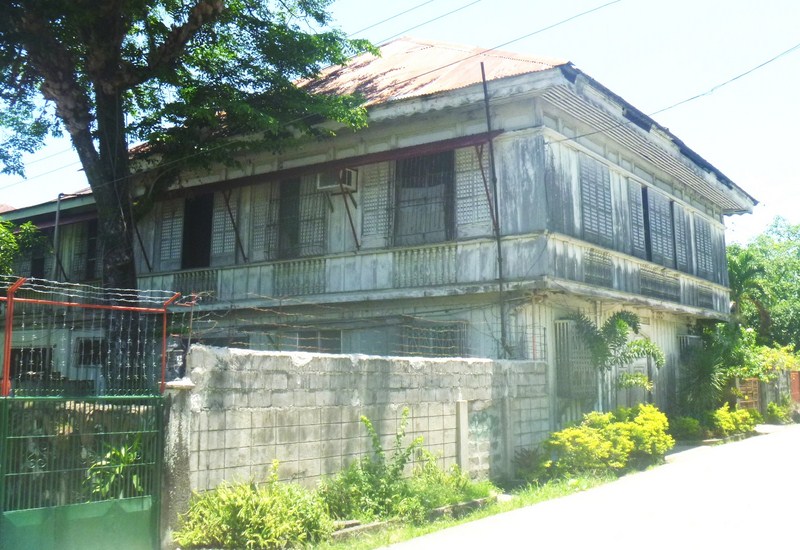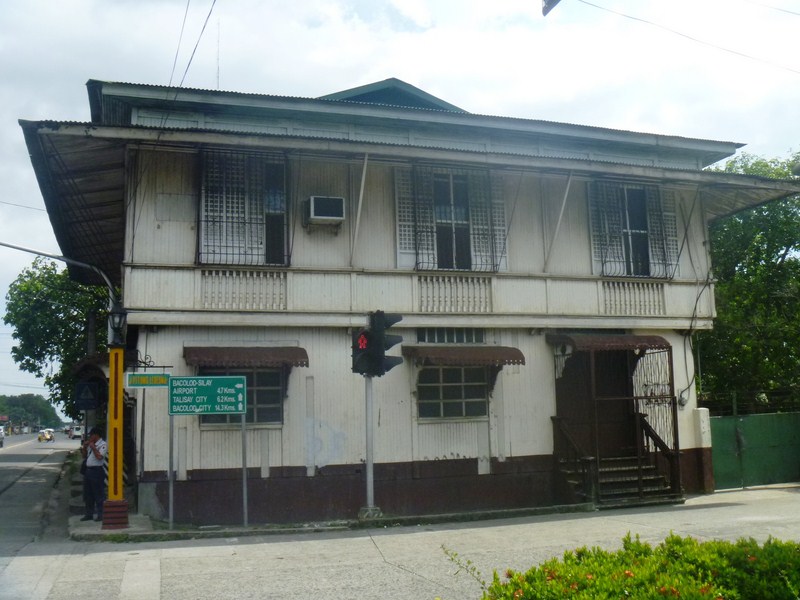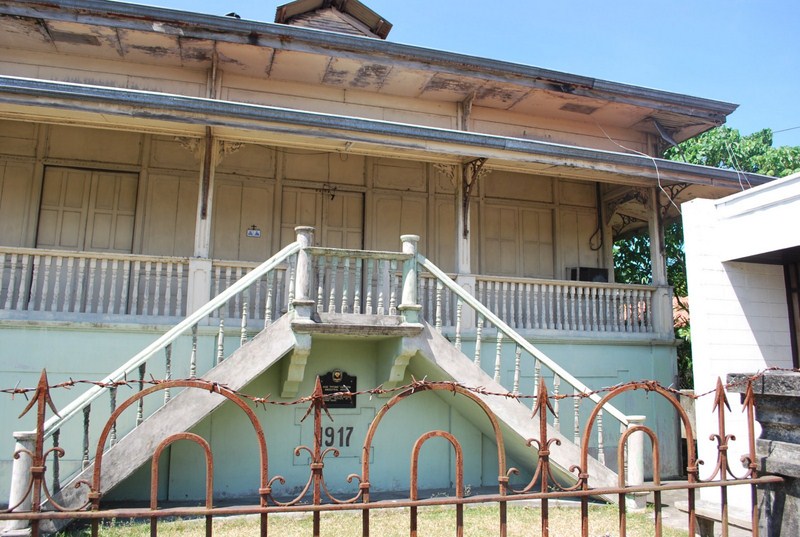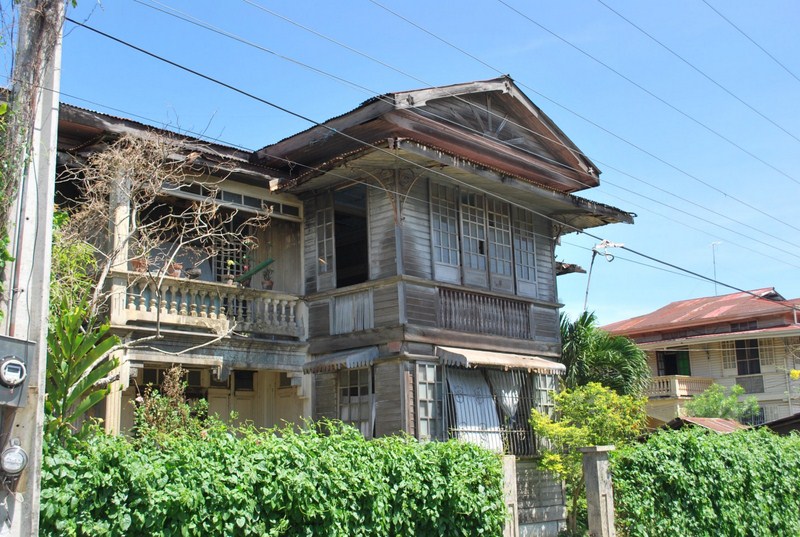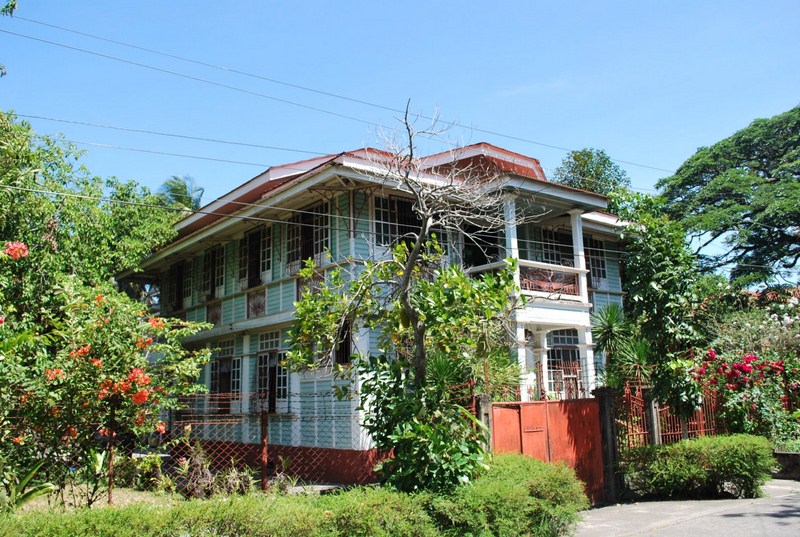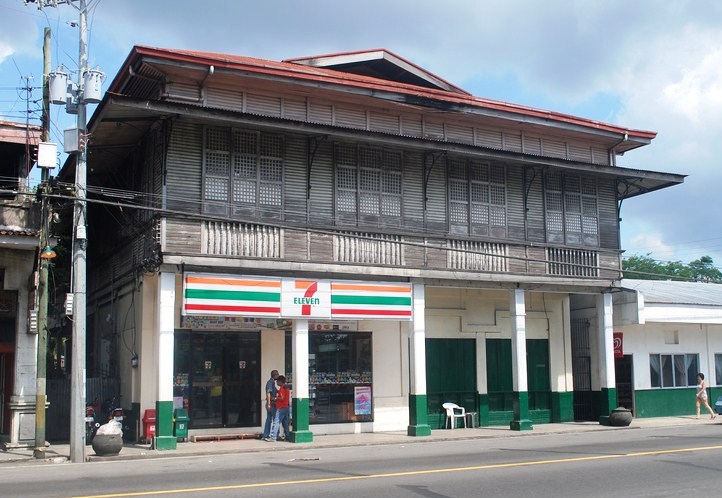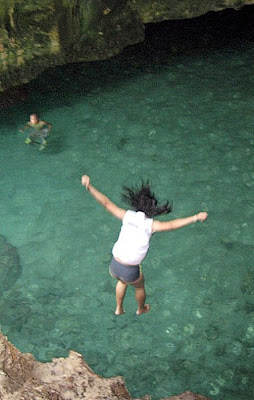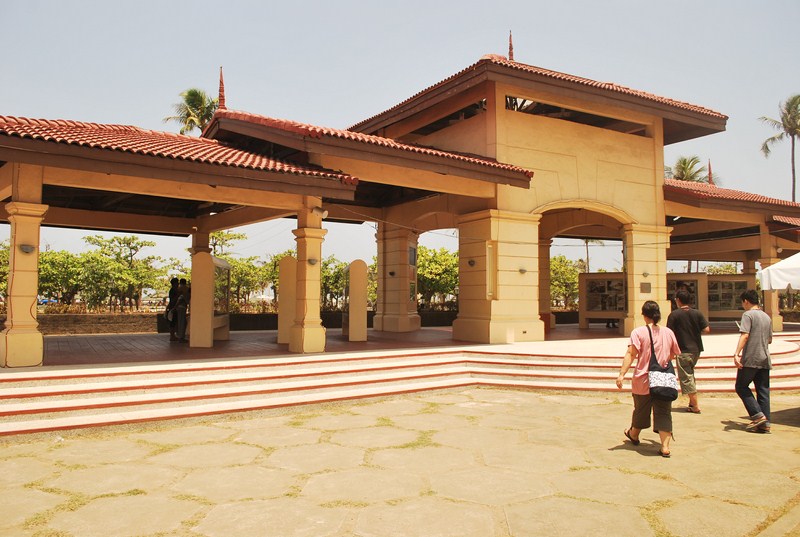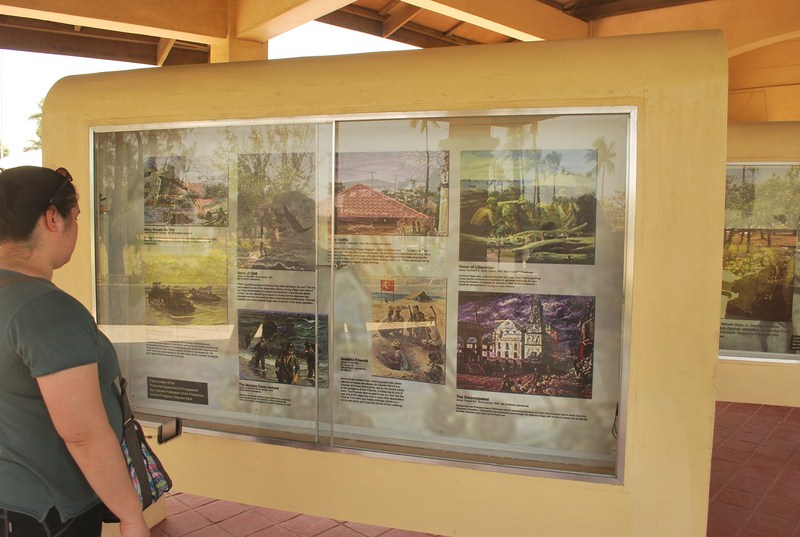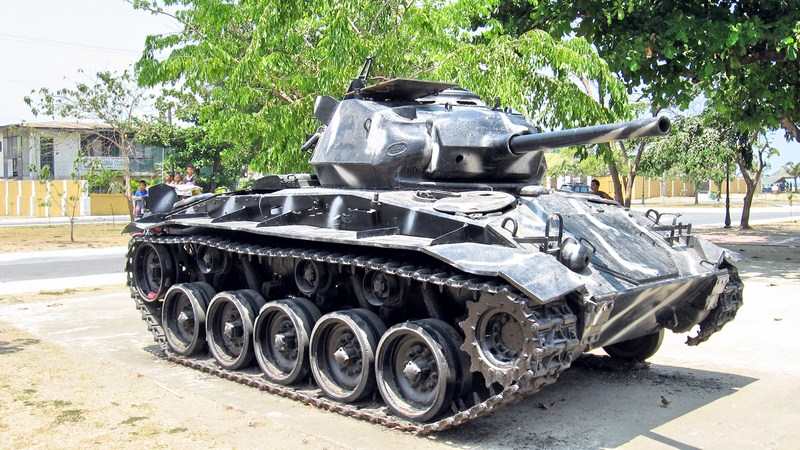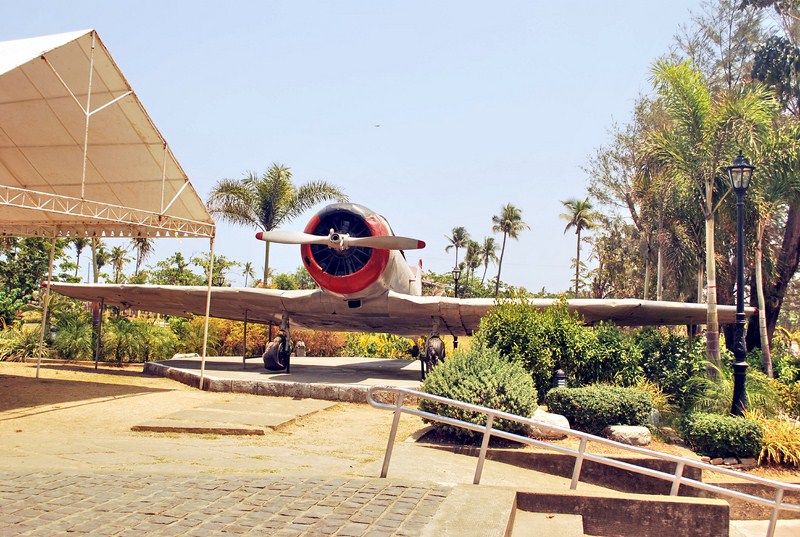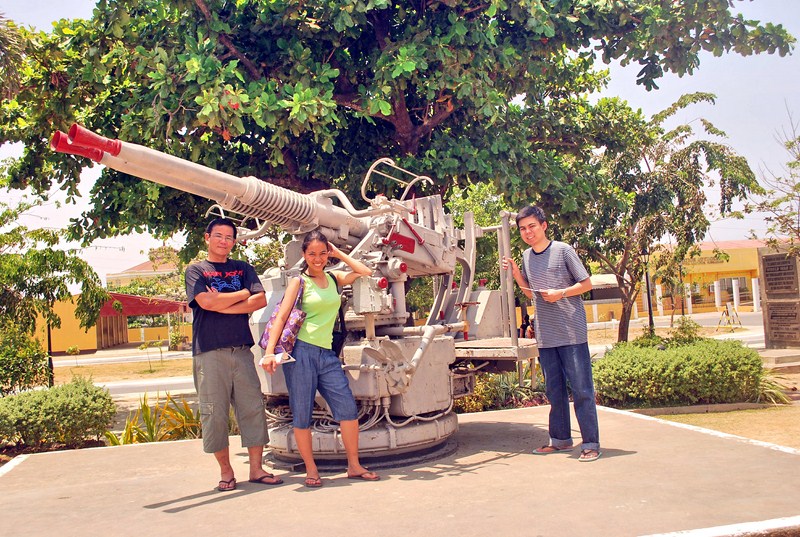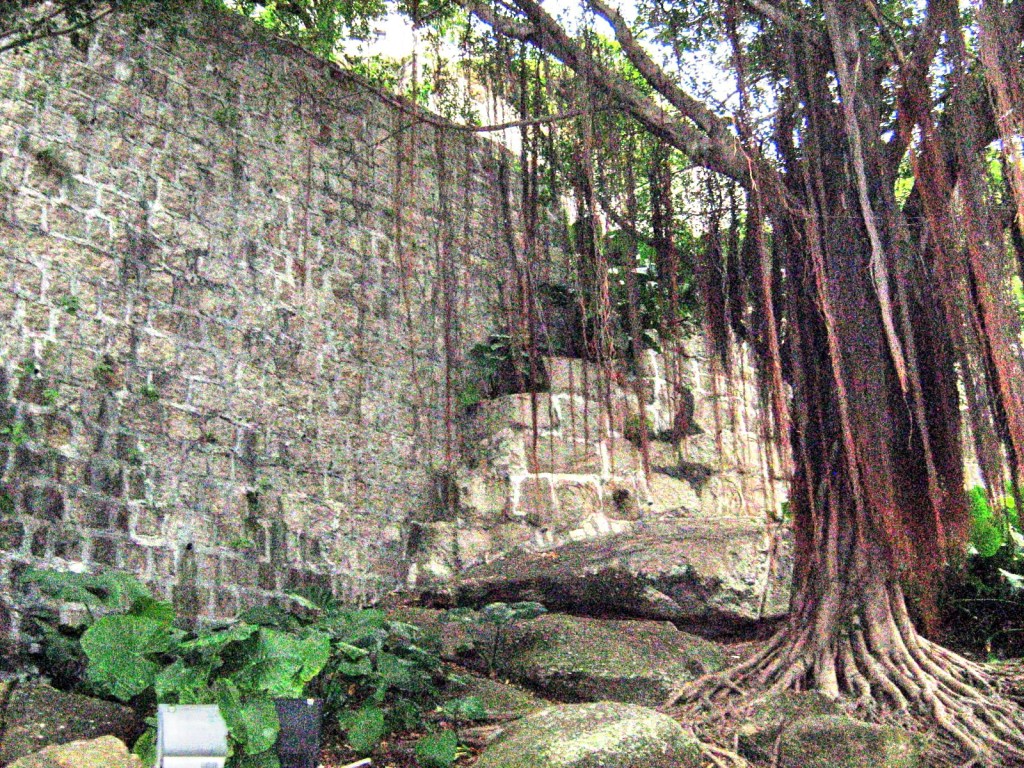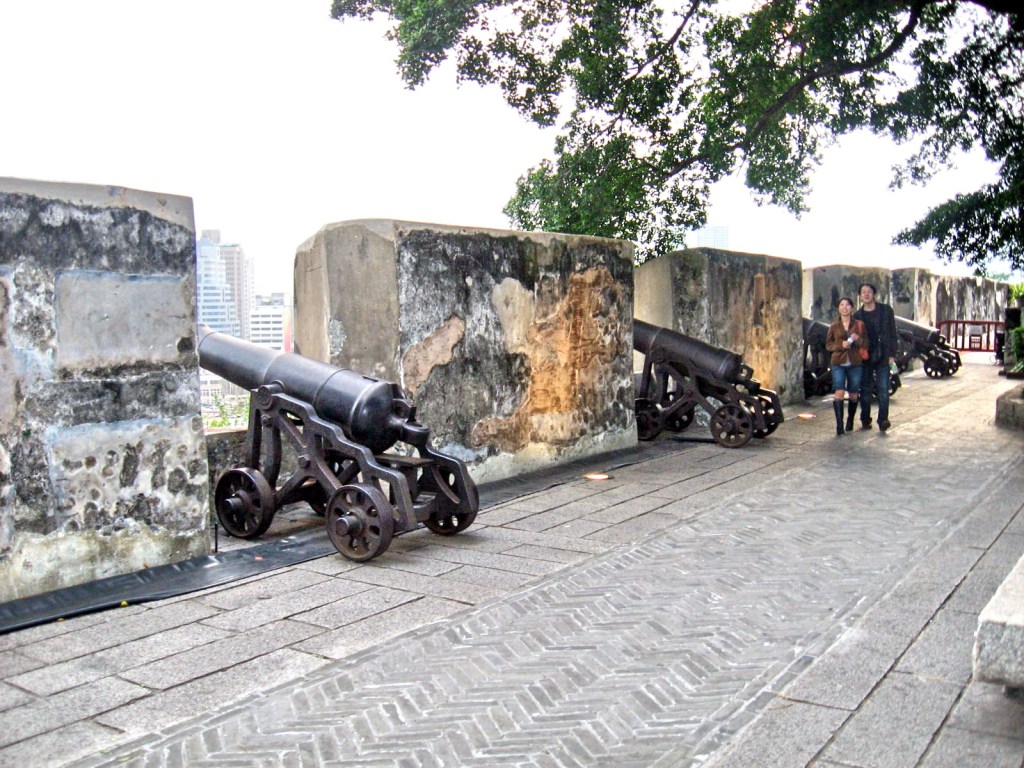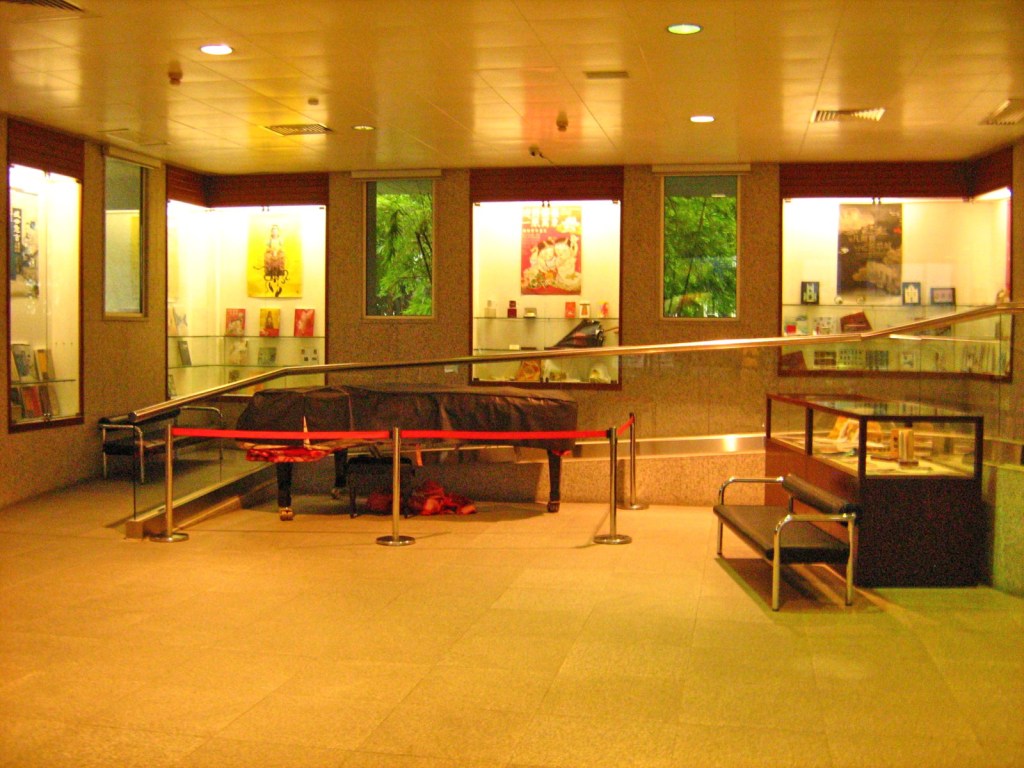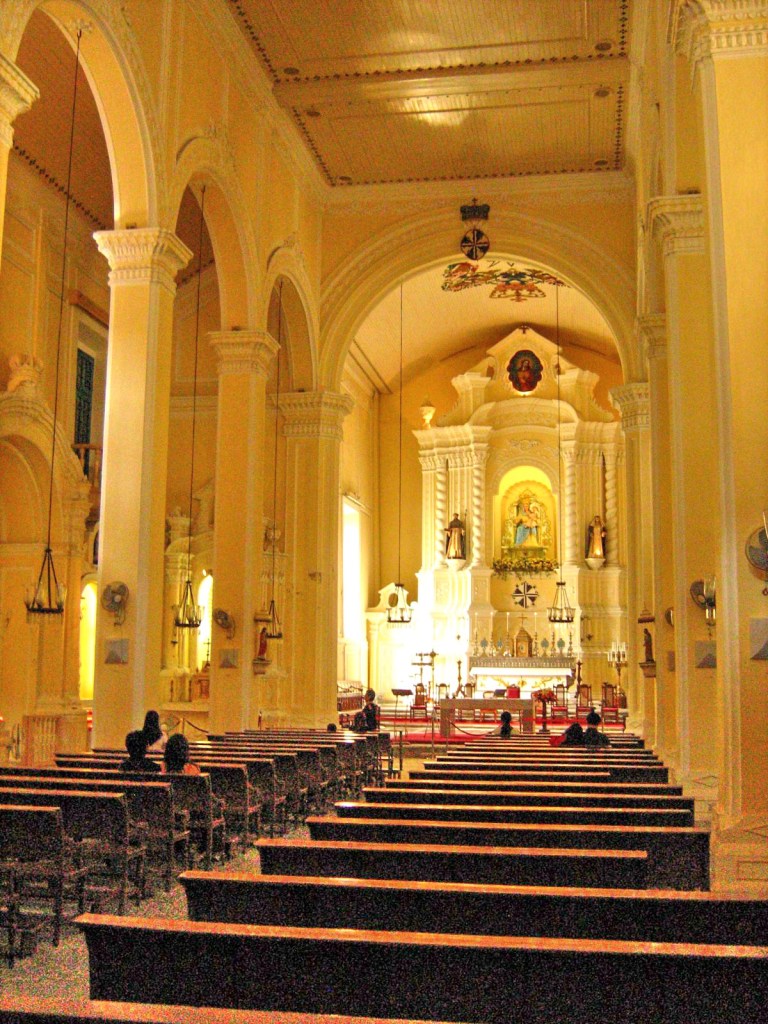| Bernardino-Ysabel Jalandoni Museum |
.jpg) |
| The expensive doll collection |
| The sala |
.jpg) |
| A 4-poster, “An Tay” bed |
.jpg) |
| The Steinway piano |
.jpg) |
| Solo and Jandy browsing through books on the round, single slab table |
.jpg) |
| An old phonograph |
We were toured around the house by a male guide. The house was built with durable balayong, a hardwood coming all the way from Mindoro. At the ground floor are photographs of Silay’s ancestral houses, a display to the Jalandoni’s expensive doll collection, 2 carriages, a gallinera (its bottom was used as a temporary enclosure for chickens) and a carroza with the statue of the Blessed Virgin Mary which is still being paraded around the city during Holy Week.
.jpg) |
| A Stradivarius violin |
.jpg) |
| A grandfather clock |
.jpg) |
| A wooden harp |
The second floor has embossed, prefabricated steel trayed ceilings imported from Hamburg, Germany. Intricately carved, French-designed wooden calado transoms, a study of visual aesthetics and function, allow air to circulate within the house. On display are antique furniture (including a single slab round table and 4-poster, Chinese-made “An Tay” beds), a wooden harp, Ming Dynasty chinaware, an old telephone, sewing machine, a Stradivarius violin, a grandfather clock, an old phonograph, a Steinway piano, chandeliers, etc. The museum also features a fine collection of books, glassware and lace supplied by the Silay Heritage Foundation members.
.jpg) |
| Grace and Cheska at the grand stairway |


.jpg)
.jpg)
.jpg)
.jpg)
.jpg)






